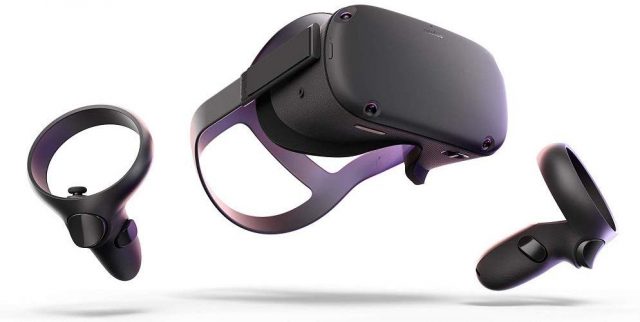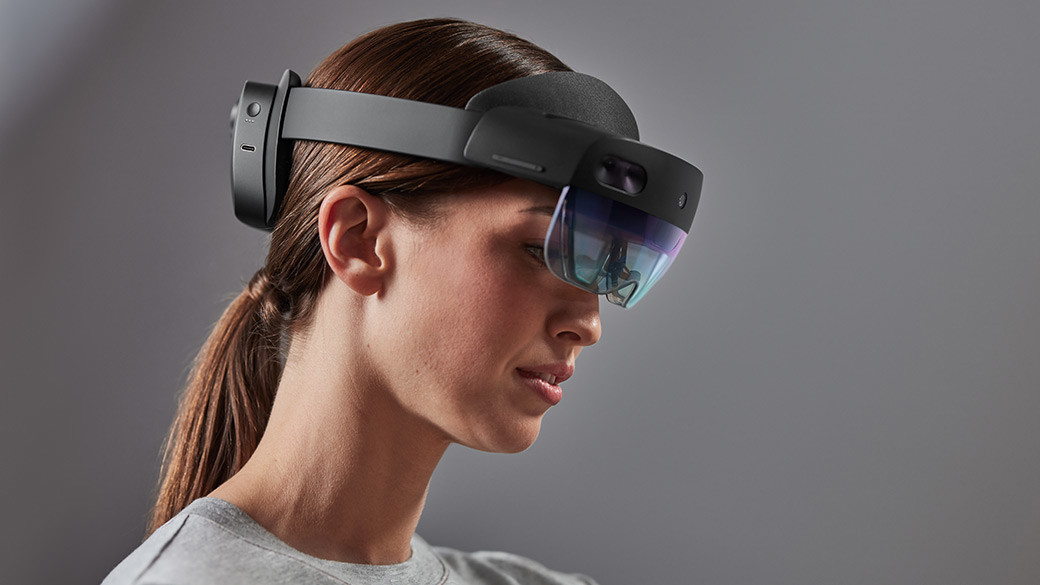For VR HMD I prefer to choose the Oculus Quest all-in-one VR gaming headset. This one sells $399 on Amazon.
Advantages:
Screen:
Oculus Quest uses a monocular 1600 x 1400 OLED screen, although there is a sense of pixels, the pixel sense is not obvious, and it can be ignored when playing games because games are not required much for 3D graphics.
Lens:
Oculus Quest uses a Fresnel lens which advantage is that it provides clear experience for surroundings and there is almost no dispersion in the center or the surroundings, while blur and distortion will appear around ordinary lenses.
Controller:
There are two ways to use Oculus Quest. One is suitable for standing or sitting in place. It will let you set up a virtual wall with a diameter range of more than one meter. A blue grid will appear around you in the game. When you do not exceed this area It will not be displayed when it is exceeded, it will be warned after it is exceeded, and an external screen will be displayed, but the colors are processed. Another way is to use touch to mark a moving range. This range can be relatively large, such as two or three meters in diameter. You can draw a range around the wall around the room. As long as your body does not exceed this area, no warning will appear.
In some games, the touch controller will become its own hands. It is quite unexpected that the controller can almost represent various gestures of people, including raising the thumb can be perceived, and feedback in the game. Some picking movements can be done easily, even with a slight hallucination that which is your own hand.
Game:
Oculus Quest is the most suitable one for playing games, and can even be directly positioned as a game console. It has a perfect game experience for playing Rhythm Space that the music and lightsaber are perfectly matched with the vibration feedback. Some roller coasters and horror games are suitable for people to play when there are many people as they can activate the atmosphere and bring joy to relatives and friends.
Disadvantages:
The angle of view of Oculus Quest is about 100 degrees which is worse than Vive. Fresnel has a disadvantage that is its clear central area is small, and it is necessary to carefully adjust the interpupillary distance and up and down position so that the eye is located in the central area of the lens, otherwise, it will be very unclear. Therefore, VR devices with Fresnel lenses without interpupillary distance adjustment may not be suitable for some people. The battery is not durable and can last for only about two hours or more. The effect of the built-in headphones is average, with 3.5mm ports on both sides, but the cable is easy to interfere with after connecting the headphones. Due to the limitations of resolution and FOV, Oculus Quest is not very suitable for watching videoes.
In general, Quest is still the main game but not suitable for watching videoes. It is the main product of Oculus at present. Because PC VR is too expensive to get started, many people ’s home PCs have not been updated for many years. If the price of a complete set is too high, it will block mainstream users. Quest this all-in-one machine should be the main development direction, at least in the mainstream public domain. The wireless of VR is inevitable. After the popularization of 5G in the future, an all-in-one machine such as quest can put a lot of processing pressure on the cloud server. This wireless is also the most effective for resource utilization. And wireless like PC VR, just remove the cable, still need to set a high-performance PC at home, this PC is only working when you play VR games, the rest of the time this PC It is in a state of idleness and waste. This method has performance advantages in a certain period of time, but it is destined to be difficult to radiate to mainstream users. To make VR as popular as smartphones, Quest is taking an inevitable path.

For AR/MR I prefer HoloLens 2.
Compared with the parameters of the first generation, it can be seen that the field of view of the Hololens 2 has more than doubled compared to the first generation, and the resolution has increased from 720p to 2k, and the sharpness has been greatly improved. The holographic scene brought to users is more vivid, more realistic, and more immersive.
And Hololens 2 has a better understanding of the environment and support for gesture interaction. This means that when we use it, it will be more convenient to operate.
Prior to this, the Hololens generation has always been criticized that the device is heavy, and it will compress the bridge of the nose when used, and it cannot be worn for a long time. The second generation has added a new function-a sunshade can be lifted up, and cushions are designed on the front and back of the head, which greatly improves the wearing comfort, which is not only very convenient to wear but also solves the problem of pressing the bridge of the nose.
Hololens2 enjoys a two-year commitment to quality assurance and obviously has improved in after-sales service.
In summary, the second generation has comprehensively improved in terms of performance, comfort, and cost performance.

